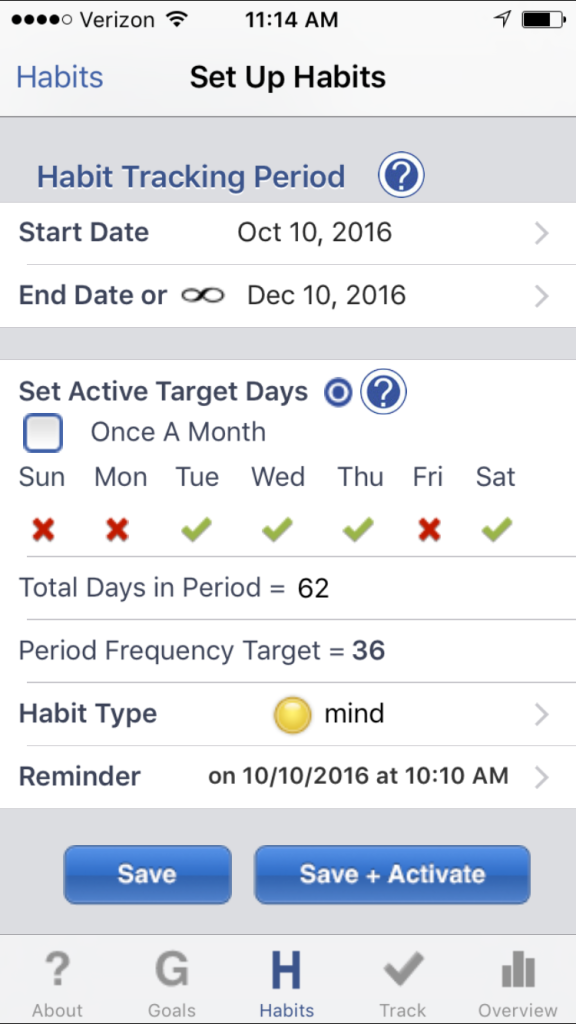By: Martin Grunburg
Every Monday morning, the garbage is picked up in our neighborhood.
Every Tuesday morning, the lawn is mowed at my favorite park, right next to the bay.
Once a quarter, the gardeners will punch the grass to aerate it.
Just another beautiful October day in San Diego, nearly 80 degrees at the beach and it’s not even 10 am. The air is crisp and a bit drier than usual. It feels like fall.
There will be a low tide today at 11:37 am, and it will be high at 5:19 pm.
The sun rose at 6:49 am and will set at 6:21 p.m.
What does any of this have to do with productivity and goal achievement?
Only everything…
“You will never change your life until you change something you do daily.” ~John C. Maxwell
While I love that quote (as it leads one toward habit) it is not entirely accurate.
A more accurate statement would be, “You will never change your life until you change or develop a new behavior — consistently, over time.
You see, habits are developed over time, via consistency.
The best way to be consistent is to incorporate the natural rhythms and patterns of our world (the calendar, days, weeks, months, etc.). You might even say that our planets orbit in a very predictable, habit-like pattern. So predictable, in fact, that it is why our clock and calendar can exist.
A habit is just a pattern — a rhythm of behavior.
The essence of appreciating these habit patterns and rhythms within nature is that you are encouraged to follow suit, to craft your own behavior patterns (habits) that align and support your most important goals.
When I learned about this many years ago, I established a Monday morning, all-hands meeting at my business to ensure the communication was flowing and everyone was on the same page. Now, 15 years later, this meeting habit has proven essential to our ongoing operations.
It’s a great myth — a fallacy really — to think that habit development requires daily repetition. It does not.
The Habit Factor method introduced these ideas around “habit alignment” (aligning a habit to a goal for faster achievement), and with it came the idea of “Target Days” as part of the P.A.R.R. methodology: Plan, Act Record and Reassess.
So, for example, to complete your goal of writing a book (without the daily practice of writing), just identify the “Target Days” that you can write. It doesn’t have to be — nor should it be — every day.
Here’s an example (via the app) to select “Target Days” (days of the week)

By writing consistently on just Tuesdays, Wednesdays, Thursdays and Saturdays, over time you will reinforce and strengthen your writing habit. And, more importantly perhaps, you will be well on your way toward achieving your goal of writing a book.
“The music is not in the notes but in the silence between them.” ~Claude Debussy
Take the above quote and view it through the prism of Habit Alignment: When it comes to creating a new habit, “silence” equates to the days off in between your Target Days.
In one of my workshops a couple years back, a woman said, “Oh! That’s why we say, for instance, our family has the ‘habit’ of going to the mountains every winter.”
BINGO! That sounds like an annual habit to me. And, if you do it for 20 years, you can bet it’s pretty well ingrained within the family.
Next Steps:
Here are a few quick steps that will allow you to incorporate the “silence between the notes” — those “off” days that trip up so many people — and still develop the habit that supports your most important goal!
1) Identify what your BIG goal is
2) Identify the 1, 2 or 3 habits (max) that will help you to achieve the goal
3) Identify the “Target Days” of those behaviors
4) Identify the “Minimum Success Criteria” (demo), or watch this video that explains the P.A.R.R. methodology.
5) ACT! (perform the behavior)
6) TRACK! – Record and reassess.
This method becomes extremely practical because it accommodates for the challenge that most people have in trying to develop a new habit. The Habit Factor method allows you to identify the best “Target Days” based upon your current schedule.
So, when you think about being productive, try not to think in terms of “every day.” Rather, focus on the rhythms/patterns of your consistent “Target Days,” and just be sure to follow the simple method above.
Until next time, enjoy the silence between the notes (and your habits) and thanks for reading! ; )
~mg